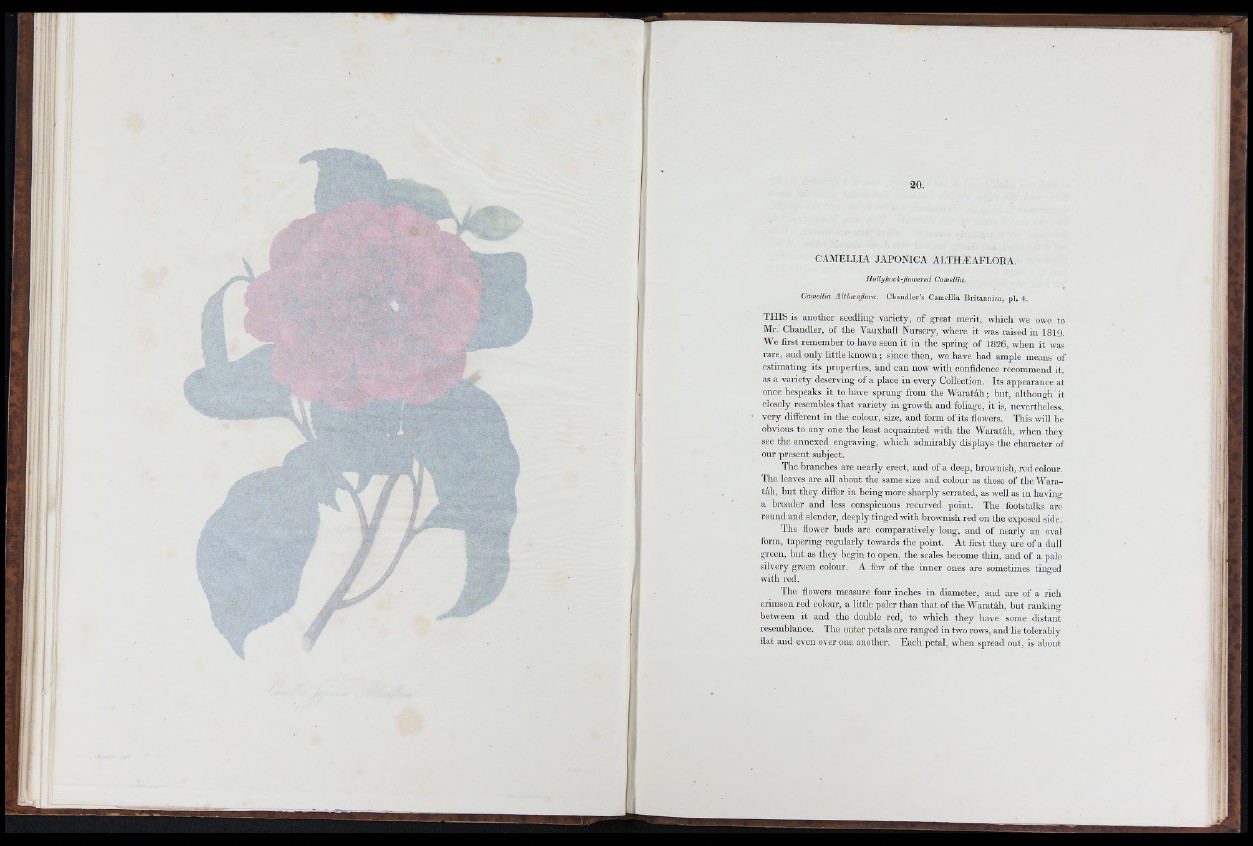
CAMELLIA JAPONICA ALTH.EAFLORA.
Hollyhock-Jlotvered Camellia.
Camellia AUhceaflora. Ch«indler’s C am e llia B r ita n n ic a , p i. 4.
THIS is another seedling variety, of great merit, which we owe to
Mr. Chandler, of the Vauxhall Nursery, where it was raised in 1819.
We first remember to have seen it in the spring of 1826, when it was
rare, and only little known ; since then, we have had ample means of
estimating its properties, and can now with confidence recommend it,
as a variety deserving of a place in every Collection. Its appearance at
once bespeaks it to have sprung from the W a ra tá h ; but, although it
closely resembles th a t variety in growth and foliage, it is, nevertheless,
veiy different in the colour, size, and form of its flowers. This will be
obvious to an y one the least acquainted with the Waratáh, when they
see the annexed engraving, which admirably displays the character of
our present subject.
The branches are nearly erect, and of a deep, brownish, red colour.
The leaves are all about the same size and colour as those of the W aratáh,
b u t they differ in being more sharply serrated, as well as in liaving
a broader and less conspicuous recurved point. The footstalks are
round and slender, deeply tinged with brownish red on the exposed side.
The flower buds are comparatively long, and o f nearly an oval
form, tapering regularly towards the point. A t first they are of a dull
green, b u t as they begin to open, the scales become thin, and of a pale
silvery green colour. A few of the inner ones are sometimes tinged
with red.
The flowers measure four inches in diameter, and are of a rich
crimson red colour, a little paler than th a t of the Waratáli, b u t ranking
between it and the double red, to which they have some distant
resemblance. The outer petals are ranged in two rows, and lie tolerably
flat and even over one another. Each petal, when spread out, is about